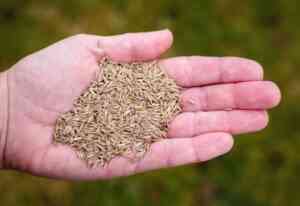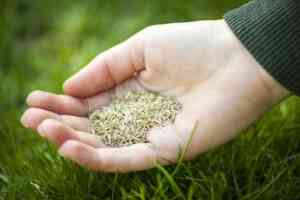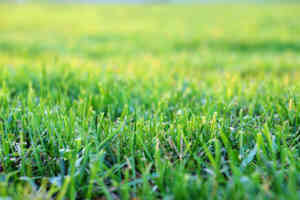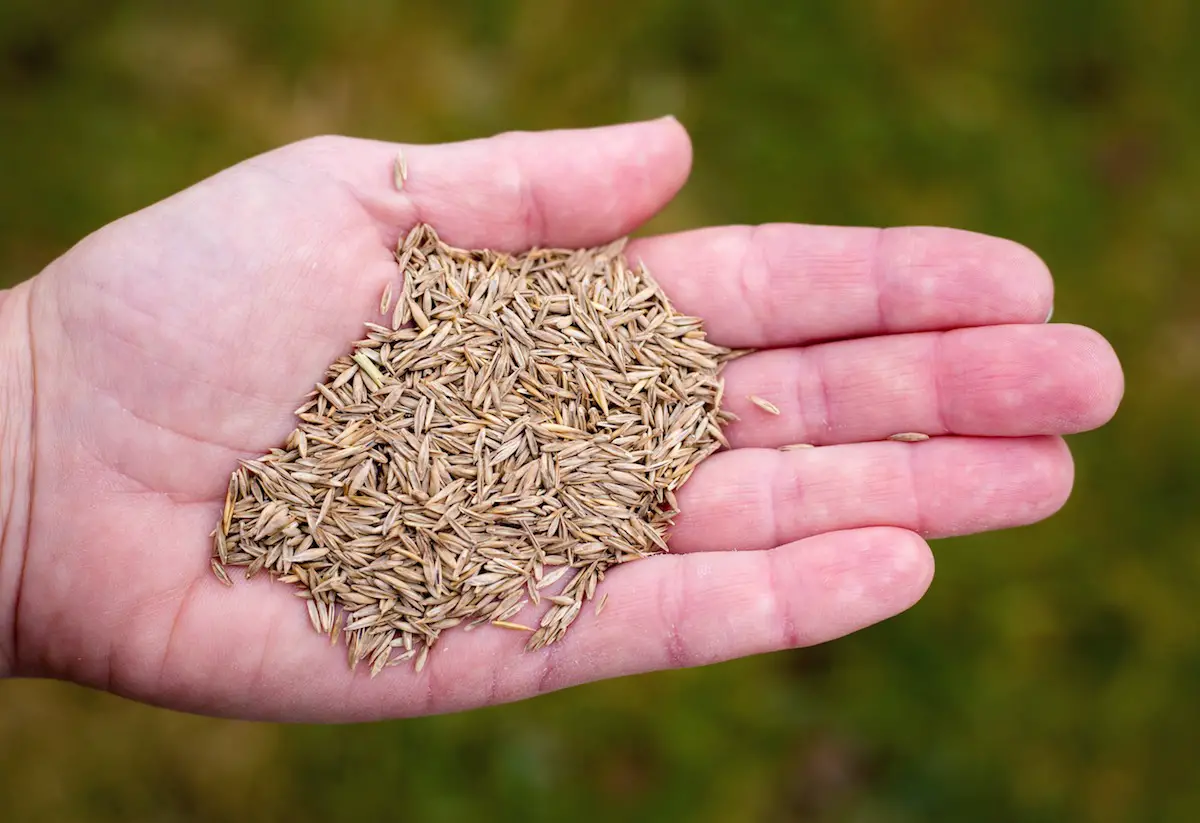How to Overseed a Lawn?
If you’re a homeowner looking for an easy way to breathe life into your lawn, overseeding is an ideal solution. This simple technique can not only revive dull grass patches but also fill in balding and thinned-out areas of your yard! So, how do you overseed a lawn?
Here is our step-by-step guide for how to overseed a lawn:
- Choose the Right Types of Grass Seeds for Your Climate
- Estimate and Measure the Area to be Overseeded
- Prepare Lawn with Soil Improver and Fertilizer
- Rake the Area Thoroughly to Create a Level Surface
- Spread the Grass Seeds Evenly Across the Lawn
- Cover the Seeded Areas with a Thin Layer of Compost or Mulch
Whether you’re just starting out with overseeding or are looking to refresh your current approach, this blog post walks through everything from the benefits of overseeding, the types of seed available on the market, how to fertilize and water your newly seeded area, and more. Keep reading to learn how you can improve the health and appearance of your lawn with minimal effort and have great lawn care!

Choose the Right Types of Grass Seeds for Your Climate
Selecting the ideal grass seed type for your specific climate can make all the difference in the health and appearance of your lawn. Various grass species have unique characteristics that allow them to thrive in certain environments, and understanding these distinctions can help guide you in making an informed decision. Factors such as tolerance to drought, heat, or cold conditions, as well as the region’s overall temperatures and precipitation patterns all need to be considered before purchasing the perfect seed. By investing time in researching grass types that are best suited to your local climate, you will be rewarded with a luscious and vibrant lawn that demands less maintenance and resources, ultimately improving the overall aesthetic and value of your property.
Estimate and Measure the Area to be Overseeded
Taking the time to accurately estimate and measure the area you plan to overseed will not only save you money and resources but will also help you achieve a healthy, lush lawn.
To start, carefully inspect your existing grass, taking note of any bare or patchy spots that could benefit from overseeding. Use a measuring tape to determine the length and width of the area, being aware of curved edges and obstacles such as bushes or trees. Convert the measurements to square footage by multiplying the length by the width.
Once you have determined the total area, you can calculate the required amount of seeds and supplements needed for a successful overseeding project. Consult seed packaging for recommended rates to ensure you don’t over or under-apply, as this could impact the overall quality of your lawn. By following these steps and paying close attention to detail, you’ll be on the right path to a beautifully overseeded and thriving yard.

Prepare Lawn with Soil Improver and Fertilizer
A lush, verdant lawn is often the crowning glory of any outdoor space, and achieving this level of beauty involves some strategic care and attention. Preparing your lawn with a soil improver and fertilizer sets the groundwork for vigorous grass, creating a dialogue between the soil and plants that are truly harmonious in nature. Soil improvers, often made from organic materials such as compost, peat, or aged manure, work to enhance the soil’s structure while also providing a wealth of essential nutrients that deep-rooted, healthy grass relies upon.
In tandem with soil improvers, the right fertilizer provides a tailored dose of additional nutrients like nitrogen, phosphorous, and potassium, which are responsible for robust growth, sturdy root systems, and that rich, emerald-green color that is synonymous with the perfect lawn. Taking the time to invest in these powerful tools for lawn care will ensure your outdoor sanctuary remains inviting, vibrant, and brimming with life all season long.
Rake the Area Thoroughly to Create a Level Surface
Before embarking on any landscaping or construction project, it is crucial to ensure that the area has been thoroughly raked and leveled. A meticulous process of raking and leveling provides a sturdy and visually appealing foundation, setting the stage for your grand design to come to life. Raking helps not only in clearing away debris, roots, rocks, and other impediments but also aids in breaking up compacted soil, which will encourage better drainage and a healthier overall landscape. Once the area has been thoroughly raked, it is essential to carefully level the area to provide stability and support for structures or even simply for walkways and gardens. With these necessary steps taken, you can rest assured that your outdoor space will be primed for a fantastic transformation, ultimately leaving you with a stunning and impressive result.
Spread the Grass Seeds Evenly Across the Lawn
Achieving a lush, green lawn, that radiates a sense of pride and satisfaction, begins with spreading the grass seeds evenly across the surface. To embark on this rejuvenating journey, consider the type of seed best suited to your lawn’s specific needs, environment, and climate. Once armed with the perfect seed, wield a broadcast spreader or your skilled hands to disperse the seeds consistently, covering every nook and cranny—allowing the tiny, budding blades of grass to form an even, verdant blanket of thriving greenery. During the delicate germination process, keep a watchful eye on this living web, supplying it with ample sunshine, water, and your unwavering care. In time, the seeds will reward you by silently erupting into a magnificent carpet of grass, harmoniously merging with the vibrant patchwork of nature outside your doorstep.
Cover the Seeded Areas With a Thin Layer of Compost or Mulch
When sowing seeds in your garden, adding a delicate layer of compost or mulch on top can make a significant difference in the germination and eventual harvest of your plants. Packing the seeded areas with this additional layer acts as a cozy blanket, keeping the seeds snug and shielded as they germinate. In turn, this accelerates growth and increases nutrient absorption, allowing the plants to flourish at an optimum rate. Moreover, compost and mulch can also help sustain moisture levels and prevent soil erosion, protecting the seeds from being washed away during a downpour or exposure to harsh weather conditions. It’s fascinating to see how just a simple technique such as this can have a tremendous impact on your gardening experience, while also promoting a bio-diverse and healthy ecosystem.

In Closing
Although the process may seem long and daunting, overseeding your lawn with the right type of grass seed can brighten up your landscape while increasing its value. By carefully selecting the right seeds for your climate, measuring and prepping the area, raking it level, and spreading a thin layer of compost mulch, you’re sure to have lush, green grass in no time. With just a bit of patience and dedication to the task at hand, you can achieve beautiful results. All without having to rely on any outside intervention or professional help. So why wait? Get started on making your lawn look amazing today!
Frequently Asked Questions
What are the benefits to overseeding a lawn?
Overseeding a lawn is an excellent way to thicken up thin spots and repair damaged patches. It promotes healthy growth, improves the soil structure, creates a weed-resistant barrier, and adds resilience against diseases, pests, and drought conditions. Additionally, it will help establish a beautiful carpet of grass that will be the envy of all your neighbors.
What are the cons to overseeding a lawn?
The main disadvantage to overseeding is that it requires a lot of work and dedication. You must prepare the soil, select the right type of seed, spread them evenly across the area, and then water consistently for several weeks until you reach your desired outcome. Additionally, there can be some financial costs associated with purchasing seeds as well as any soil treatment or tools that may be required. Lastly, it is important to note that overseeding can cause some disruption to your turf and any existing grass will have to compete with the new seeds for resources. Therefore, you should ensure that you are employing the proper techniques for maximum success.

